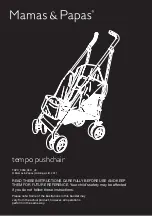
Regio Midi manual
Chapter 16
Modbus signal types
67
Chapter 16 Modbus signal types
EXOL Types
The EXOL types of the signals:
R = Real (-3.3E38 - 3.3E38)
I = Integer (-32768 - 32767)
X = Index (0 - 255)
L = Logic (0/1)
Modbus Type
The Modbus types of the signals (types in the list below):
1 = Coil Status Register (Modbus function = 1, 5 and 15)
2 = Discrete Input (Modbus function = 2)
3 = Holding Register (Modbus function = 3, 6 and 16)
4 = Input Register (Modbus function = 4)
Supported Modbus functions:
1 = Read Coils
2 = Read Discrete Input
3 = Read Holding Register
4 = Read Input Register
5 = Write Single Coil
6 = Write Single Register
15 = Write Multiple Coils
16 = Write Multiple Registers
Scale factor Modbus
”Discrete Inputs” and ”Coil status register” always have scale factor 1. For ”Input register”
and ”Holding register”, see variable list in chapter ”Modbus signals”.
EXOline/Modbus
The Midi controller automatically switches between EXOline and Modbus depending on the
present communication type, without any communication error.
Modbus wiring etc.
A protocol such as Modbus consists of several layers (OSI-model). The bottom layer
is always the physical layer, number of wires and signal levels. The next layer
describes the communication digits (number of data bits, stop-bits, parity etc). Then
come the layers describing the Modbus specific functions (number of digits per
message, the meaning of different messages etc).
For Modbus, the bottom layer can be RS485, RS422 or RS232.
RS485 contra RS422
RS485 and RS422 are the electric part of the protocol, i. e. the physical layer.
RS485 has two connections, A and B. Often there is also a protective earth (N on EXO
controllers). RS485 units are connected A
A and B
B. You may have to shift A and B in
order for Modbus to work. RS485 is so called half duplex communication: Communication
can only go in one direction at a time; i. e. the master will first send an enquiry and will
thereafter listen for the reply. A and B are used for both transmission and reception.
















































